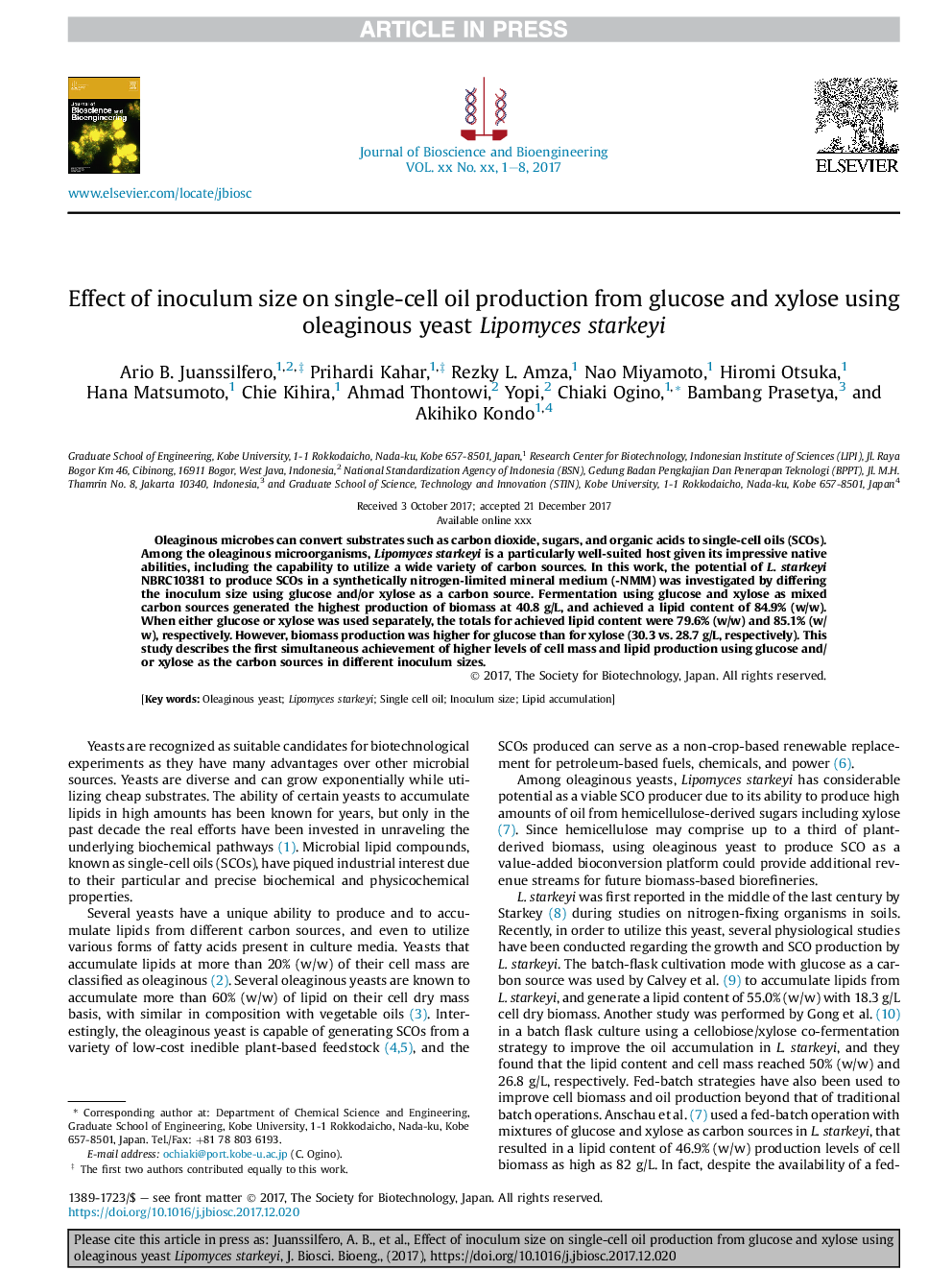| Article ID | Journal | Published Year | Pages | File Type |
|---|---|---|---|---|
| 6489781 | Journal of Bioscience and Bioengineering | 2018 | 8 Pages |
Abstract
Oleaginous microbes can convert substrates such as carbon dioxide, sugars, and organic acids to single-cell oils (SCOs). Among the oleaginous microorganisms, Lipomyces starkeyi is a particularly well-suited host given its impressive native abilities, including the capability to utilize a wide variety of carbon sources. In this work, the potential of L. starkeyi NBRC10381 to produce SCOs in a synthetically nitrogen-limited mineral medium (-NMM) was investigated by differing the inoculum size using glucose and/or xylose as a carbon source. Fermentation using glucose and xylose as mixed carbon sources generated the highest production of biomass at 40.8 g/L, and achieved a lipid content of 84.9% (w/w). When either glucose or xylose was used separately, the totals for achieved lipid content were 79.6% (w/w) and 85.1% (w/w), respectively. However, biomass production was higher for glucose than for xylose (30.3 vs. 28.7 g/L, respectively). This study describes the first simultaneous achievement of higher levels of cell mass and lipid production using glucose and/or xylose as the carbon sources in different inoculum sizes.
Related Topics
Physical Sciences and Engineering
Chemical Engineering
Bioengineering
Authors
Ario B. Juanssilfero, Prihardi Kahar, Rezky L. Amza, Nao Miyamoto, Hiromi Otsuka, Hana Matsumoto, Chie Kihira, Ahmad Thontowi, Yopi Yopi, Chiaki Ogino, Bambang Prasetya, Akihiko Kondo,
